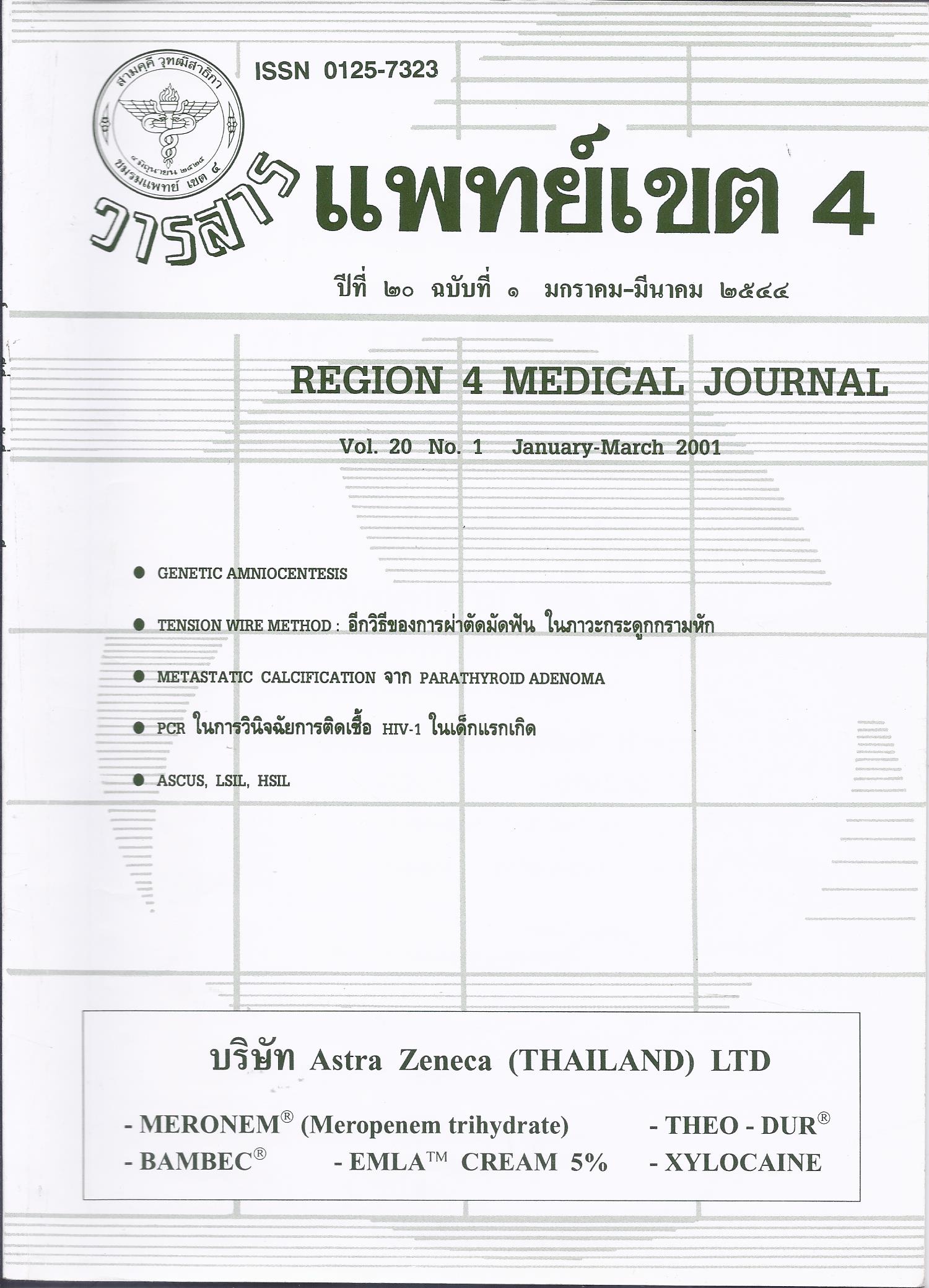ประเมินการทดสอบวิธี CPR ที่ใช้วินิจฉัยการติดเชื้อ HIV-1 ในเด็กแรกเกิด
บทคัดย่อ
PCR-based procedures are now widely used to diagnose human immunodeficiency virus type 1 (HIV-1) infection in infants due to the early diagnosis more than serological methods. However the method protocol must be optimized and validated. In house PCR protocol was compared with serological method which sensitivity and specificity showed 100% concordance in intravenous drug abusers in recent study. However these subjects have different physiological status from the infant group so the different outcome may be found. Thus the evaluation of these PCR-based protocols were studies in 361 infants born to HIV-1 seropositive mothers. All samples were tested for proviral DNA by DNA-PCR and 303 samples for viral RNA by RNA-PCR. There were 144 from 361 samples (39.9%) came back to follow up serological method after 18 months for gold standard. RNA-PCR showed 100% concordance (103 samples) with serological method while DNA-PCR found 2 false negative samples in the first less than 6 month ages. The sensitivity, specificity, accuracy, positive predictive value and negative predictive value of DNA-PCR were 80, 100, 98.6, 100, 98.5% respectively. While the sensitivity, specificity, accuracy, positive predictive value and negative predictive value of RNA-PCR were 100%. The comparison of DNA-PCR and RNA- PCR showed 98% concordance (298 from 304 samples). DNA-PCR has more false negative than RNA-PCR. In conclusion these in house PCR protocols have 100% specificity but false negative could be found especially DNA-PCR. To decrease false negative rate, both DNA-PCR and RNA-PCR should be included in testing.
ดาวน์โหลด
เผยแพร่แล้ว
รูปแบบการอ้างอิง
ฉบับ
ประเภทบทความ
สัญญาอนุญาต
ลิขสิทธิ์บทความเป็นของผู้เขียนบทความ แต่หากผลงานของท่านได้รับการพิจารณาตีพิมพ์ลงวารสารแพทย์เขต 4-5 จะคงไว้ซึ่งสิทธิ์ในการตีพิมพ์ครั้งแรกด้วยเหตุที่บทความจะปรากฎในวารสารที่เข้าถึงได้ จึงอนุญาตให้นำบทความในวารสารไปใช้ประโยชน์ได้ในเชิงวิชาการโดยจำเป็นต้องมีการอ้างอิงถึงชื่อวารสารอย่างถูกต้อง แต่ไม่อนุญาตให้นำไปใช้ในเชิงพาณิชย์




